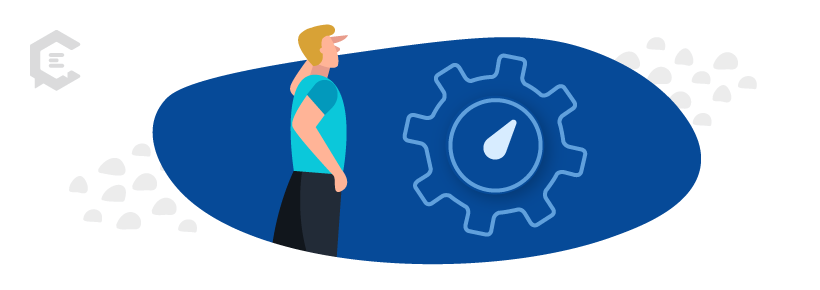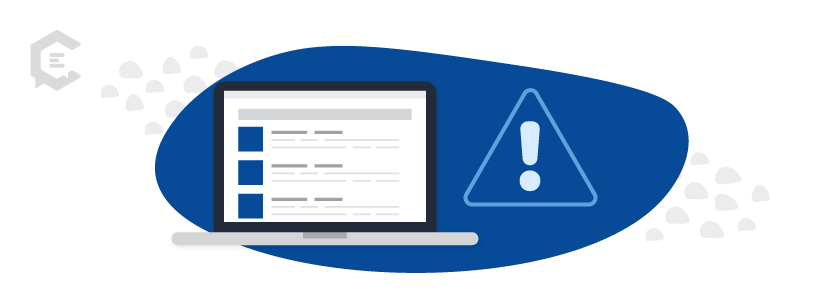Whether it was due to the COVID-19 pandemic or a shifting attitude about productivity, many businesses and agencies now offer long-term remote work options for their employees.
While some pandemic-inspired remote work options have been rolled back, countless other employers have recognized that fully remote and hybrid workplaces provide benefits not only for employees but their overhead too.
But what does this mean not only for the way modern businesses operate but the way you market to customers? Remote work and modern marketing are a natural progression — but it does take some adjustment to fine-tune to ensure your remote employees feel connected and productive — and to ensure your business reaches today’s consumers.
The Shift to Remote Work
In this article, we will dive deeper into how remote work has changed the lives of both consumers and modern marketers and offer some tips on how to best address these changes to better approach and manage your work and also reach the consumer in the “new normal.”
Of course, there are a number of benefits of remote work. One of the primary benefits is that remote work saves companies money. The truth is that remote work is a win-win for both employees and agencies.
Remote work benefits companies and employees
The win-win for employees and agencies goes deep, with a wide variety of benefits for remote working scenarios.
Below is a sample of some of the high-level benefits enjoyed by the firm and employees due to remote work:
- Flexibility in working schedule (employees) and ability to scale (employers)
- Increased talent base for recruiting
- Cost reduction in office overhead and wages
- Reduced carbon footprint
- Better employee satisfaction
Allowing employees to work from anywhere without being limited to their physical geographic areas allows them more flexibility and opens the door for companies to reach a broader talent base, including regions with lower living costs.
Challenges of remote work and modern marketing
On the other hand, remote work has sparked a number of challenges for remote work and modern marketing. This includes marketers and agency team members, customers, and consumers. Many consumers are now forced to work in a single household alongside a partner or spouse who works remotely, and children participating in online classrooms in the same or next room.
Therefore, distractions are plenty and impact a marketer’s job — which often involves creative thinking and problem-solving and “deep work” activities that require long periods without distractions. The shift to remote work sparked these challenges, and marketers must now approach their work differently.
The shift in customers’ buying habits
Additionally, consumer buying patterns and behaviors changed. For marketers in the e-commerce space, you likely saw a gigantic uptick in sales in 2020. Out of frustration with wearing masks, long lines, and empty shelves, it almost goes without saying that many, if not most, shifted their buying habits to e-commerce.
While e-commerce revenue hit $706.4 billion in 2020, we’ve seen steady growth in the years since.
In 2022, e-commerce revenue skyrocket to $905 billion, with 2023 projected to go even higher. But what does this mean for remote work and modern marketing?
These opportunities represent a gold mine for marketers who work within the e-commerce space.
3 Tips for Adjusting to Remote Work
Although some workers say they feel less productive while working from home, others claim that their productivity levels have actually increased as remote work has saved them commuting time, an overabundance of in-person meetings, and the typical office distractions.
Regardless of which side of the coin you work on, how can marketers and other creative professionals and workers make remote work and modern marketing effective for them? Here are some tips for adjusting to working outside of offices:
1. Remote work is a mindset
The first thing to remember is that remote work isn’t a “place” or even a physical space; it’s a mindset. This means thinking differently about how you approach your work.
This has presented a challenge for many new remote workers, particularly for those who were very good at establishing boundaries between their work and home lives.
Now that today’s circumstances have forced the two to blend, it has been challenging to shift work-life boundaries. As a result, work-life balance has shifted to more of a work-life integration.
The best way to approach remote work is to set up a designated work area (preferably one with a door to shut out distractions, if possible), schedule set work hours, and structure your day just as you would while working in a traditional office setting.
You may also need to communicate your “work hours” with family members, room or housemates, or friends, asking them not to bother you during those hours (within reason, of course).
2. Schedule “deep work” sessions
As marketers, a great deal of our work stems from creativity. And amidst a wealth of distractions — what’s going on in the world, social media, or right in our own homes — it is seemingly more difficult than ever to focus. However, work and life must continue, and we still must get things done.
One of the best ways to do this is to schedule “deep work” sessions — periods of work without interruptions — email, Slack messages, Facebook notifications, Zoom meetings, or phone calls. You may need to go as far as to schedule these deep work sessions on your calendar. This will not only give you a schedule to follow but also be visible to clients and coworkers that this time slot is “off-limits.”
Doing this might spark a little anxiety, especially since marketers’ roles involve substantial collaboration with other team members and stakeholders. By communicating when your scheduled “deep work” sessions occur, and why you need them, you might be surprised to discover that most of your co-workers and clients will respect you and won’t be bothered that they can’t reach you during those times.
You will also feel more motivated and fulfilled to have blocks of time “offline” to focus on what you need to, which in turn refills your creativity cup.
3. Keep the collaborative culture
On the flip side, many companies and marketers worry about what a remote work culture would look like, especially for those who rely heavily on in-office interactions and in-person whiteboard sessions for brainstorming ideas and solutions for marketing activities, initiatives, and strategies.
The good news is marketers and teams don’t have to lose that collaborative culture by working remotely; it just needs to shift.
Those tools you used in the office can be brought to an online environment. For example, more video conferencing or live chat tools are available than ever.
Some popular tools include the following:
- Zoom
- Google Meet
- Microsoft Teams
- Blue Jeans
These tools allow for screen sharing, live chatting, and video conferencing, among many other features that enhance digital working sessions. There are also many digital whiteboard tools, such as MindMeister, LucidChart, and even Whiteboards for Jira.
With the right tools and habits, you can maintain that collaborative atmosphere and culture and shift it online, ensuring that remote work and modern marketing align perfectly.
3 Ways Marketers Can Approach Modern Customers
Now that you have some tips and ideas on better managing remote work as a marketer or creative, it’s time to answer the million-dollar question: How can marketers combine remote work and modern marketing to reach customers who’ve changed since the pandemic?
As we mentioned briefly above, consumers’ buying behaviors and patterns have changed substantially for the foreseeable future, or permanently.
Here are some ways to approach customers and effectively meet their needs today:
1. Revisit your marketing strategy
The first step is to take the time to revisit your marketing strategy. Look at your ideal customer persona profiles or avatars, and note what has changed. For example, many consumers today are stressed about work-life balance, shifting work schedules, and lay-offs. This also means that their interests look different.
Take the time to revise each of your customer profiles, thinking of each differently. By understanding your customers’ needs, interests, and pain points these days, you will be able to shift the rest of your marketing strategy, messaging, and activities accordingly, and come up with a new marketing plan.
2. Adjust your communication messaging
As noted above, adjusting your communication and messaging is the second thing to do. Reread your email sends, social posts, blog posts, and even your website content. How would you change that content and communication to reflect customers’ current needs and interests today?
Adopting a “digital empathy” mindset is a key element to content marketing success today.
3. Adopt account-based marketing (ABM)
Account-based marketing is just what it sounds like: marketing to accounts rather than to an individual. Suppose your business or agency is in the B2B space. In that case, you might read this and think, “we are already doing that,” however, the truth is that even if you are already taking an account-based marketing approach, there is likely room for sales and marketing to be more aligned, improve targeting, and pinpoint key metrics for success.
ABM needs to be defined for every company and every project. It’s important to differentiate broader marketing campaign and sales efforts, and pinpoint where ABM sits in the existing framework. This involves really honing in on closing the gap between what marketing considers MQLs and what sales considers SQLs.
The truth is, not every company is set up for it! So be sure to do your due diligence before slapping a target list, email blasting accounts at random, and sending gifts to execs.
But the good news is that ABM complements these efforts for companies and brands that already follow the inbound marketing methodology. Inbound marketing and ABM work together: Inbound is the who and ABM is the how. At the end of the day, the goal of ABM is efficiency and scalability.
3 Mistakes to Avoid in Modern Marketing
In summary, modern marketing has changed in every sense of the word. It has changed how marketers work as creative professionals, and also how they target and communicate with prospects and customers. Now that you have a better understanding of how to adjust your work habits and mindset with modern marketing, here is what to avoid to ensure remote work and modern marketing go hand in hand:
1. Don’t send the same old email marketing
Before you schedule your next weekly newsletter for delivery, give it a good, hard read-through. Does the same message still apply? Is the messaging still effective? Does it still provide readers with value?
One tip is to read it as a recipient. How would you feel if you received your email newsletter in your inbox and read it? With your answers in mind, think of how to switch it up to leverage new content marketing techniques in 2023.
2. Avoid opinions and politics
Some brands and businesses have made the opposite mistake of adjusting their communication or sending out material that could be considered highly opinionated or overly political to send out timely, newsworthy material for higher engagement.
Opinions and political statements belong in the White House, not your marketing communications.
3. Avoid over-promotion and sales
If your company is struggling with generating sales or leads, you might feel under pressure from executives and leaders to push more marketing with the hopes of boosting sales. However, this can have the opposite effect. Customers and prospects are sick of bad news and see right through schemes, gimmicky campaigns, and big-batch email blasts.
Follow this one rule: Only send content or communications that are truly valuable to your audiences. This might mean reducing the amount of content you send, but it will resonate well with your audience — guaranteed.
Finally, the best way to adjust to modern marketing is to put yourself in your buyers’ or customers’ shoes and rethink your marketing strategy.
Need help reaching today’s e-commerce savvy consumer? ClearVoice can help. Get exceptional content written by industry experts, from blog posts and ebooks to website copy and email newsletters. Talk to a content specialist today to get started.







